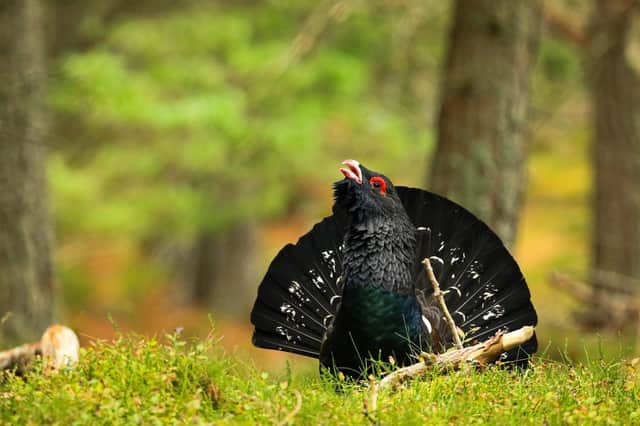Warning that iconic capercaillie is facing extinction unless further action is taken


The figures reveal that capercaillie numbers in Scotland have nearly halved in 10 years, with as few as 304 birds remaining in 2020, compared to 580 in 2010.
The largest grouse in the world, capercaillie was once widespread before going extinct in the 1780s. Following reintroduction efforts in the 1830s it is now only found in old pine forests in the Highlands, primarily in the Cairngorms National Park.
Capercaillie are now red-listed and protected in the UK.
Advertisement
Hide AdAdvertisement
Hide AdIn the 1970s there were around 20,000 left in Scotland but since then numbers have been declining despite efforts to help them.
Dr David Baines, Head of Uplands Research at GWCT, said: “Declines are associated with a reduction in breeding success, which varies annually in relation to poor weather in June when chicks are growing and increased signs of predators such as pine marten in recent decades.
“This has happened despite efforts by land managers to improve habitat, and legally control foxes and crows.
“To reverse the trend and save the capercaillie from once again dying out in Scotland, we need to take urgent action and conservation measures must be stepped up, including legal predator control, reducing predation risk by pine marten and further reducing the risk of bird collisions with deer fences.”
Advertisement
Hide AdAdvertisement
Hide AdGWCT scientists wanted to establish more accurate population estimates and longer-term trends by investigating whether annual counts of males at spring leks, and counts of adults and their young in August, could be combined with published survival rates.
Counts of adults and their broods in August showed that between 2010 and 2020 breeding success fell from 1.24 chicks per female to 0.05 across five forests in Badenoch & Strathspey. This was linked to a progressive decline in the number of males at leks of 2.9% per year.
This approach provided more up to date information than that from national transect-based surveys, which only took place every six years and produced relatively imprecise population estimates.
Dr Baines continued: "Given the importance of low breeding success in the current decline and the variety of changing factors that influence annual success, the Trust firmly recommends that the previously comprehensive programme of brood monitoring should be restored to provide more robust estimates of productivity."
Advertisement
Hide AdAdvertisement
Hide AdThe devasting impact that collisions with deer fences can have on capercaillie and the related black grouse is now well established. These fences, designed to keep deer out of regenerating woodlands, can both injure and kill capercaillie when they fly into them.
Trust research proved that by marking fences, bird collisions can be reduced but not prevented. Despite this knowledge, many fences dangerous to capercaillie and black grouse remain and of these many are unmarked. This new study suggests those fences are still impacting capercaillie by killing full-grown birds.
Dr Baines explained: “By 2020, the risk of capercaillie extinction in Scotland was 23% after 25 years, 95% after 50 years and 100% after 100 years.
“When we removed deaths caused by fences from our analyses, the likelihood of extinction went right down to 0% after 25 years, 3% after 50 and 40% after 100 years, highlighting that fence removal must be an immediate and high priority to help save the capercaillie.”